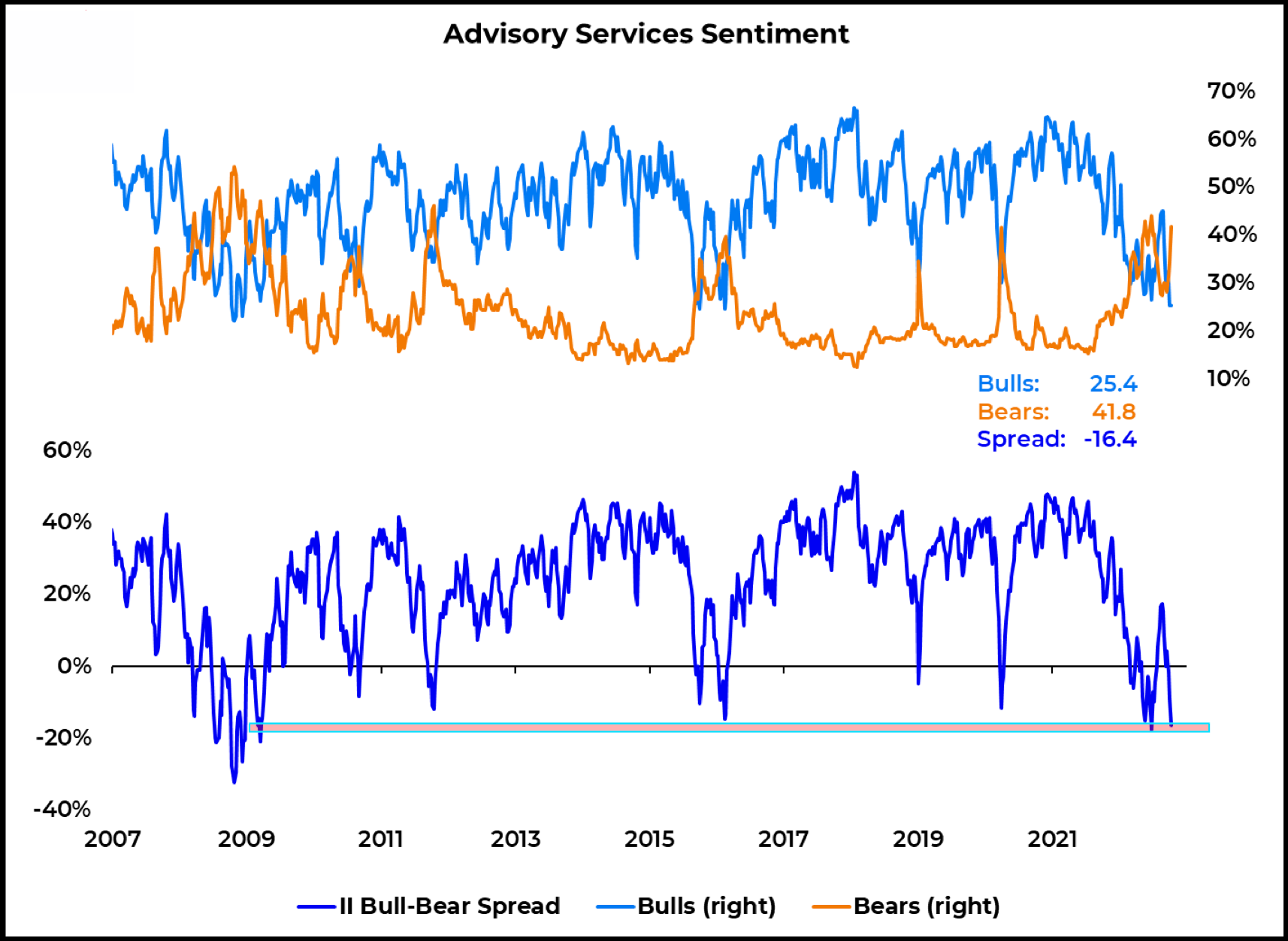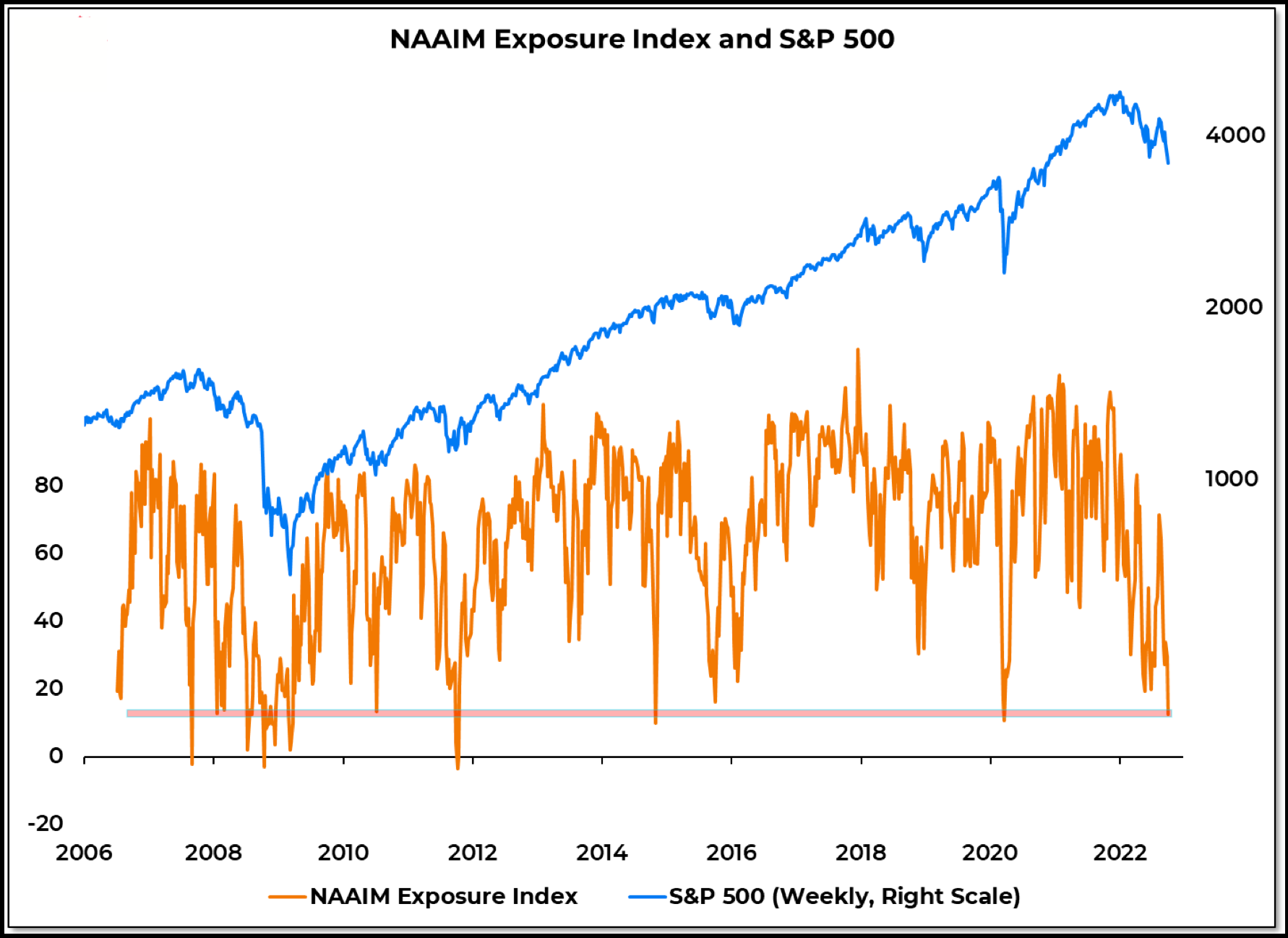Related Blogs
October 7, 2022 | Avalon Team
Investor sentiment can be a valuable contrarian indicator.
The idea is that when everyone is either too Bullish or too Bearish (as they are now) it implies that it may be time to consider the other side of what the majority is thinking.
We gauge the level of Bullishness/Bearishness through sentiment surveys… and when levels are at extremes, that’s when they’re most helpful.
Right now the data suggests an overabundance of pessimism among investors – but there’s a catch…
This appears to be a case of watching what they do, not what they say.
Let’s look at the data.
There are many surveys out there – first we’ll take a look at the II Advisory survey, which is a survey of professional advisors.
Last week, Bulls remained unchanged, meaning they’re still at their lowest level since 2016. While Bears on the other hand moved back near their June high.
The lower part of the chart is the spread between Bulls and Bears. Right now, it’s at levels only reached a handful of times in recent history – 2008/2009 and 2016 (that’s pretty dubious company).
In the AAII survey of individual investors, Bears were above 60% for the second consecutive week…
This may not seem like a big deal except for the fact that it’s the first time that has happened since the survey’s inception all the way back in the 1980s.
And for the 26th consecutive week, Bears have outnumbered Bulls, so there’s a large amount of Bearishness in the air…
Next is the NAAIM Index (North American Active Investment Manager) – it takes the pulse of professional investment managers by measuring their exposure to equities. The higher the allocation to equities, the more confidence managers have in current market conditions.
Last week, the NAAIM index fell below its June lows at 12.6%. For context, that is just barely above its COVID low of 10.7%. Meaning professional money managers are having nothing to do with equities until they prove themselves further.
Now, getting back to the point… I’m not buying some of the data. I will remain very skeptical of the data until investor actions catch up to their mouths.
Because despite the pessimism, despite all the survey data pointing to the contrary, investors are still finding reasons to buy stocks.
Here’s proof: In September alone equity ETFs had inflows of $16 billion. That’s right, in spite of claiming how bearish they feel, investors were still buying up equities.
We all know that fear and greed drive investor decisions. It seems to me the latter is still in control of the investor psyche. But, I will remind you that emotional investing may prove hazardous to your account in the months to come.
One more data point proves my point that investors have stubbornly remained over-invested in equities. Looking back at 4 previous cycles, when bearishness met or exceeded 60%, investor allocation to stocks remained around 44%.
Yet, today, investor allocation to equity remains above 60%. This is definitely a time when what they say is not in line with what they do.
This tells me investors have yet to throw in the towel on this market… it also tells me that there is plenty more selling that can occur if the economy continues to flounder under the weight of Fed policy.
Markets bottom when there is no more selling left to be done… when anyone who was going to sell, has sold. This doesn’t have that feeling to me.
I would be very cautious about relying on any of the sentiment data until allocations are reconciled with investor psychology.
If you have any questions or have been considering hiring an advisor, then schedule a free consultation with one of our advisors today. There’s no risk or obligation—let's just talk.
Tags

Free Guide: How to Find the Best Advisor for You
Get our absolutely free guide that covers different types of advisory services you'll encounter, differences between RIAs and broker-dealers, questions you’ll want to ask when interviewing advisors, and data any good financial advisor should know about you and your portfolio.





